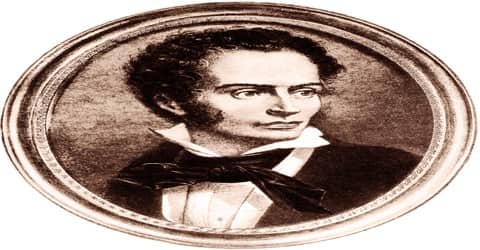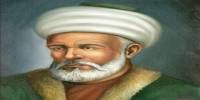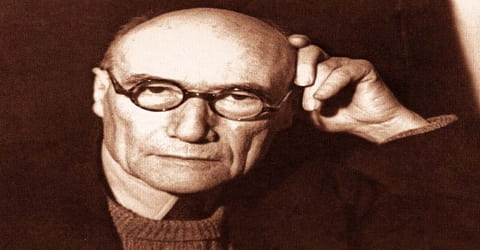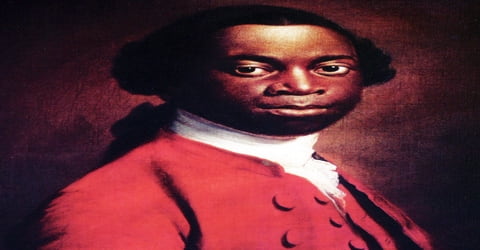Biography of René Laennec
René Laennec – French physician.
Name: René-Théophile-Hyacinthe Laennec
Date of Birth: 17 February 1781
Place of Birth: Quimper, France
Date of Death: 13 August 1826 (aged 45)
Place of Death: Ploaré, France
Occupation: Physician
Father: Théophile-Marie Laënnec
Mother: Michelle Félicité Guesdon Laënnec
Spouse/Ex: Jacquette Guichard (m. 1824-1826)
Early Life
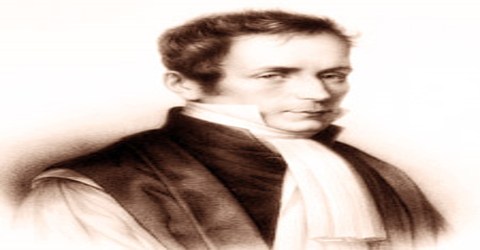
A French physician and a great inventor, who invented the stethoscope in 1816 and perfected the art of auditory examination of the chest cavity, René Laennec was born on 17th February 1781, in Quimper located in France. He was the son of Michelle Laënnec and Théophile-Marie Laënnec. The stethoscope was a great invention which was and is still used in diagnosing conditions related to the chest. Laennec was also a professor and lecturer in the field of medicine during his career. The great physician also discovered that metastatic melanoma was what resulted in melatonin lesions. His report on this discovery was published in 1806 as a bulletin.
Born as the son of a lawyer, René Laennec was actually discouraged from practicing medicine as a young man. But as fate would have it, he proceeded to study under several famous physicians, including Dupuytren and Jean-Nicolas Corvisart-Desmarets before becoming a prominent physician in his own right. The introduction of auscultation a new method to diagnose diseases was his biggest contribution to medical science. This method involves listening to and identifying various sounds made by different body organs. Before the invention of this method, Laennec’s diagnostic method involved placing his ear on the chest of his patients. This method made him quite uncomfortable especially while he was diagnosing young women and hence this led to the innovation of a new device called stethoscope which he initially termed as “chest examiner”. With his new chest examiner, he was able to study the different sounds of the heart thus categorizing them as either healthy or unhealthy. Though criticized initially, his works were way ahead of his times and had a great impact on medical science.
René Laennec’s other works led to a better understanding and study of the liver disease, cirrhosis. Sadly, Laennec’s life came to an end when he was still a young man. Laennec was only 45 years old when tuberculosis claimed him. The world had lost a kind man who had a golden heart. He was a great philanthropist who always assisted those in need. He became a lecturer at the Collège de France in 1822 and professor of medicine in 1823. His final appointments were that of the head of the medical clinic at the Hôpital de la Charité and professor at the Collège de France.
Childhood, Family and Educational Life
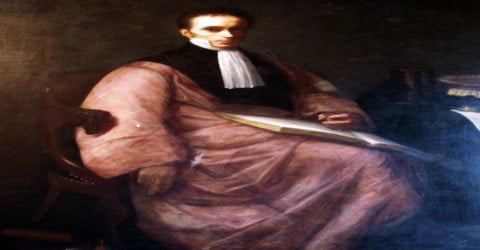
René Laënnec, in full René-Théophile-Hyacinthe Laënnec (French: laɛnɛk), was born on 17th February 1781, in Quimper, France, to Théophile-Marie Laënnec and Michelle Félicité Guesdon Laënnec. His father was a professional lawyer. His mother died of tuberculosis when he was five or six years old, leaving Rene and his brother in the care of their father. Their father was left with the responsibility of raising his two sons.
In 1793, during the French Revolution, the boys were sent to live with their uncle Guillaime-François Laennec who was the dean of medicine at the University of Nantes. Under his uncle’s able guidance the young René too developed an interest in medicine and began his medical studies. His father, however, did not want his son to become a doctor and tried to dissuade him from practicing medicine.
René Laennec spent a period of time studying Greek and writing poetry. But he could not stay away from the medical field for long. He soon enrolled as a medical student in Paris’ finest hospital, the Charite, and studied under prominent physicians like Dupuytren and Jean-Nicolas Corvisart-Desmarets. A brilliant student, he became a member of the Societe d’Instruction Medicale.
Personal Life
René Laennec married quite late in his life. He tied the knot with Jaqueline Argou when he was 43 years old. She was a widow who initially acted as his housekeeper. His wife soon became pregnant but suffered a miscarriage after a few months.
Laennec was a very kind and religious person, known for his charity towards the underprivileged.
Career and Works
René Laennec went to Paris, in 1800 and entered the École Pratique, studying anatomy and dissection in the laboratory of a surgeon and pathologist Guillaume Dupuytren. While Dupuytren undoubtedly influenced Laënnec’s studies, Laënnec also received instruction from other well-known French anatomists and physicians, including Gaspard Laurent Bayle, who studied tuberculosis and cancer; Marie-François-Xavier Bichat, who helped establish histology, the study of tissues; and Jean-Nicolas Corvisart des Marets, who used chest percussion to assess heart function and who served as personal physician to Napoleon I.
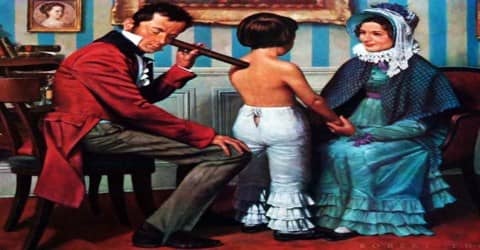
In 1802 Laennec started publishing important scientific papers on a variety of topics. One of his major papers was on peritonitis (inflammation of the abdominal cavity’s lining). He suffered from poor health and shortness of breath but his health problems did not deter his commitment to medical science. He continued working hard in spite of his health issues.
In 1804 Laennec graduated, his doctoral thesis on the relationship of the ancient Greek Hippocratic doctrine to practical medicine was accepted and continued his research as a faculty member of the Society of the School of Medicine in Paris. He wrote several articles on pathological anatomy and became devoted to Roman Catholicism, which led to his appointment as personal physician to Joseph Cardinal Fesch, half brother of Napoleon and French ambassador to the Vatican in Rome.
René Laennec became an editor and contributor to the esteemed ‘Journal of Medicine, Surgery, and Pharmacy’ and proceeded to open his own private practice. During the Napoleonic Wars in 1812-13, he took charge of the wards in the Salpêtrière Hospital in Paris, which was reserved for wounded soldiers. A stanch Roman Catholic, his religious affiliation helped him to secure an appointment as personal physician to Joseph Cardinal Fesch, half brother of Napoleon and French ambassador to the Vatican in Rome. He remained Fesch’s physician until 1814.
Laennec was offered a position at the Necker Hospital situated in Paris as a physician, from 1816. During his practice as a physician, he found that listening to heartbeats the traditional way was quite hectic. This was when he came up with a stethoscope which has then been used in identifying various chest conditions. He served at the College of France as professor and chair of medicine, in 1822.
René Laennec’s original stethoscope design consisted of a hollow tube of wood that was 3.5 cm (1.4 inches) in diameter and 25 cm (10 inches) long and was monoaural, transmitting sound to one ear. It could be easily disassembled and reassembled, and it used a special plug to facilitate the transmission of sounds from the patient’s heart and lungs. His instrument replaced the practice of immediate auscultation, in which the physician laid his ear on the chest of the patient to listen to chest sounds. The awkwardness that this method created in the case of women patients compelled Laënnec to find a better way to listen to the chest. His wooden monoaural stethoscope was replaced by models using rubber tubing at the end of the 19th century. Other advancements include the development of binaural stethoscopes, capable of transmitting sounds to both ears of the physician.
When a young overweight woman came to him complaining of chest problems, Laennec found the traditional method of listening to heartbeats to be very ineffective. So he rolled some paper into a cylinder and placed one side on the woman’s chest and the other to his ear. He could now hear the sounds more clearly. Laennec improvised on the new device he had just designed and called it a stethoscope, from stethos (chest), and skopos (examination). Laënnec presented his findings and research on the stethoscope to the Academy of Sciences in Paris, and in 1819 he published his masterpiece, De l’auscultation médiate ou Traité du Diagnostic des Maladies des Poumon et du Coeur, 8 in two volumes. After the publication of the English translation of this seminal work, he gained much popularity worldwide. Physicians from all over Europe came to him to learn about the new device and he became a lecturer of international repute.
René Laennec coined the phrase mediate auscultation (indirect listening), as opposed to the popular practice at the time of directly placing the ear on the chest (immediate auscultation). He named his instrument the stethoscope, from the Greek words στήθος(stethos) (chest), and σκοπός(skopos) (examination). The stethoscope quickly gained popularity as De l’Auscultation Médiate was translated and distributed across France, England, Italy, and Germany in the early 1820s.
In 1821, the first English translation of De l’auscultation médiate was published in London. Laënnec’s treatise aroused intense interest, and physicians from throughout Europe came to Paris to learn about Laënnec’s diagnostic tool. He became an internationally renowned lecturer. Laënnec was appointed chair and professor of medicine at the College of France, in 1822, and the following year he became a full member of the French Academy of Medicine and a professor at the medical clinic of the Charity Hospital in Paris.
While still a medical student, René Laennec was the first person to lecture on melanoma, in 1804. This lecture was subsequently published in 1805. Laennec actually used the term ‘melanose,’ which he derived from the Greek (mela, melan) for “black.” Over the years, there were bitter exchanges between Laennec and Dupuytren, the latter objecting that there was no mention of his work in this area and his role in its discovery. He also studied tuberculosis.
René Laennec was made a Chevalier of the Legion of Honour, in 1824. That same year Laënnec married Jacquette Guichard, a widow. They did not have any children, his wife having suffered a miscarriage.
Awards and Honor
René Laennec was awarded the First Prize in Medicine for his great contributions in the field, in 1803. He was also honored with Sole Prize in Surgery that same year.
In 1824, Laennec was made a knight of the Legion of Honor.
Death and Legacy
On 13th August 1826, in Ploaré, France, at the age of 45, René Laënnec died from cavitating tuberculosis the same disease that he helped elucidate using his stethoscope. Using his own invention, he could diagnose himself and understand that he was dying.
Laennec invented the stethoscope. The initial model he developed consisted of a wooden tube and was monaural; it was very similar to the common ear trumpet, a historical form of hearing aid. The new device helped him in classifying the terms rales, rhonchi, crepitance, and egophony pertaining to sounds captured by the stethoscope. He coined the term cirrhosis, using the Greek word (kirrhos, tawny) that referred to the tawny, yellow nodules characteristic of the disease. Laennec’s cirrhosis, a disease associated with inflammatory polyarthritis is named after him.
René Laennec was the first to recognize that melanotic lesions were the result of metastatic melanoma, in which cancer cells from the original tumor site spread to other organs and tissues in the body. He is considered the father of clinical auscultation, and he wrote the first descriptions of pneumonia, bronchiectasis, pleurisy, emphysema, and pneumothorax. His classification of pulmonary conditions is still used today.
Information Source:
